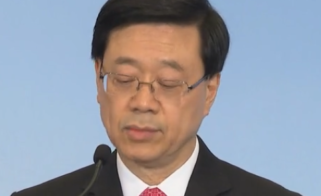Regulators in China and Hong Kong have made limited headway in approving new funds under the Mainland-Hong Kong Mutual Recognition of Funds (MRF) scheme in the first nine months of 2017, according to the Securities & Futures Commission (SFC).
The MRF scheme, which was launched in July 2015, allows Hong Kong and Chinese asset managers to distribute funds in each other’s jurisdiction, with an initial combined two-way quota of 600 billion RMB (US$87.12 billion).
Figures from the SFC’s quarterly report released on December 6 show that it only added two Hong Kong-domiciled funds to the list of northbound funds between January and September, bringing the total to eight as at September 30.
Meanwhile, the China Securities Regulatory Commission (CSRC) also permitted only two new Mainland funds to be distributed in Hong Kong in the first nine months of 2017, bringing the total to 50.
“The approval process [for the CSRC and the SFC] has obviously slowed down compared to the amount of funds they approved at the early stage. It might be due to the control of capital outflow,” Alwyns Li, a partner at Deacons, a Hong Kong law firm, tells Asia Asset Management (AAM).
Although some northbound funds, including the two approved this year, have drawn positive response in China, the regulators are not expected to speed up approvals anytime soon, according to Mr. Li.
“The speed of the MRF approval process is subject to whether the documents submitted by the fund managers are complete or not. We don’t see the regulators deliberately decelerate the processes,” Sally Wong, chief executive officer of the Hong Kong Investment Funds Association, tells AAM.
More than 20 funds in Hong Kong which received MRF qualification have not pursued fund sales yet. Mr. Li says they may be taking a wait-and-see approach until market conditions become more favourable.
According to Terence Chong, executive director of Lau Chor Tak Institute of Global Economics and Finance at the Chinese University of Hong Kong, the significance of the MRF programme will not be undermined by other cross-border channels such as the Stock Connect programme – the cross-border access which allows Hong Kong investors to trade Mainland equities, and Mainland investors to invest in Hong Kong shares.
“Hong Kong equities funds still look attractive to Mainland investors. They can access a basket of Hong Kong equities through MRF funds instead of buying individual Hong Kong stocks under the stock connect scheme,” Mr. Chong tells AAM.
Separately, the SFC report says it authorised 31 unit trusts and one mandatory provident fund (MPF) pooled investment fund in the third quarter, bringing the total number of SFC-authorised collective investment schemes to 2,772 as of September 30.
